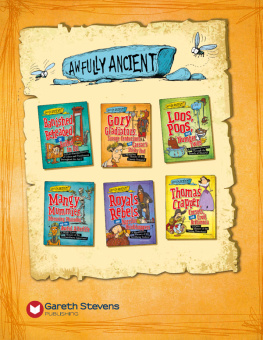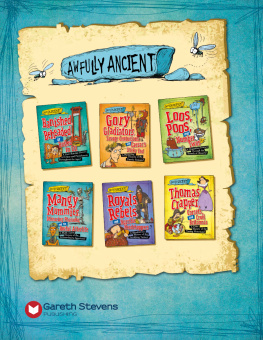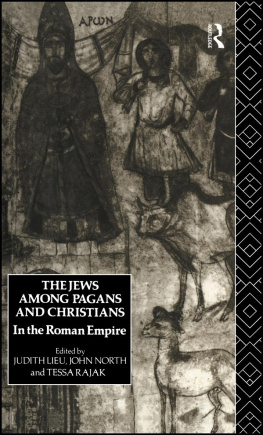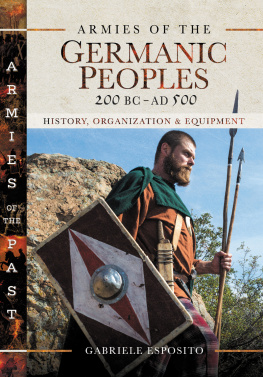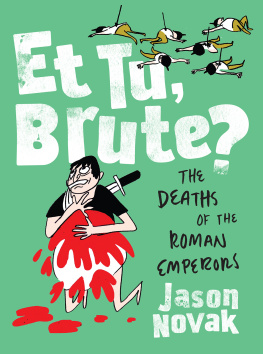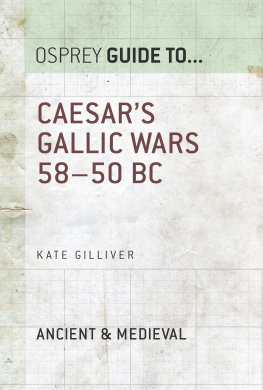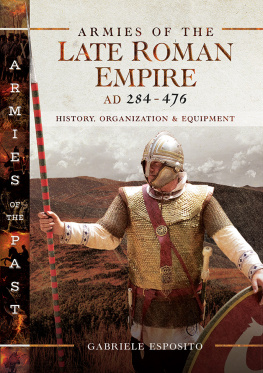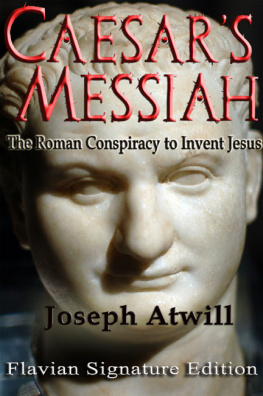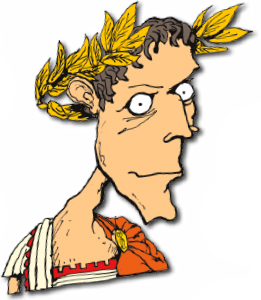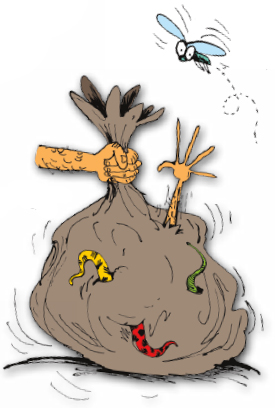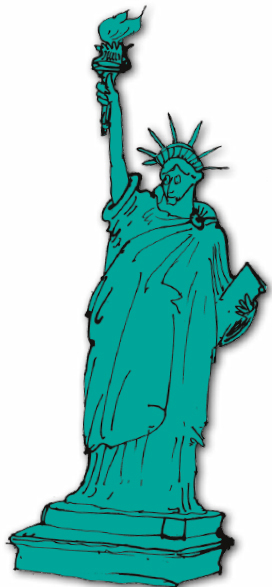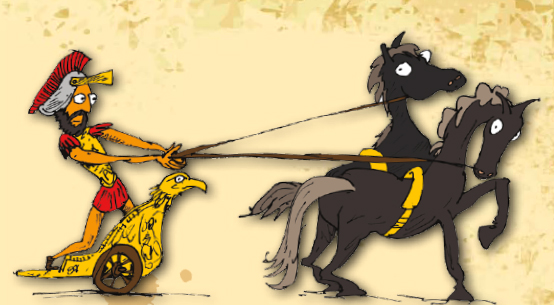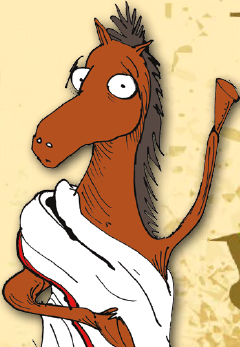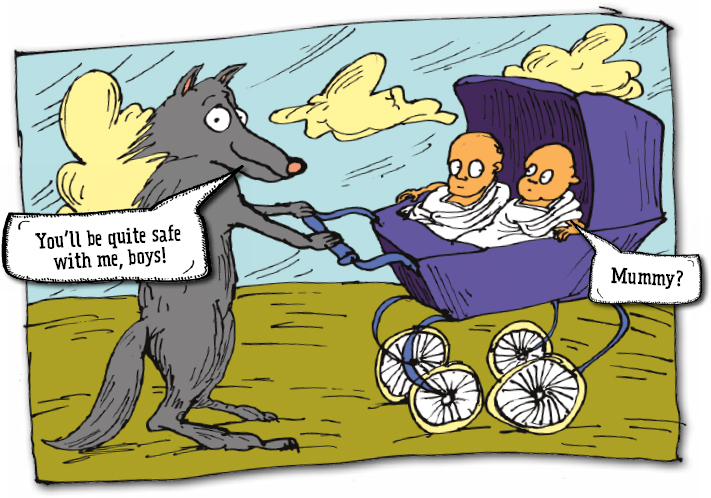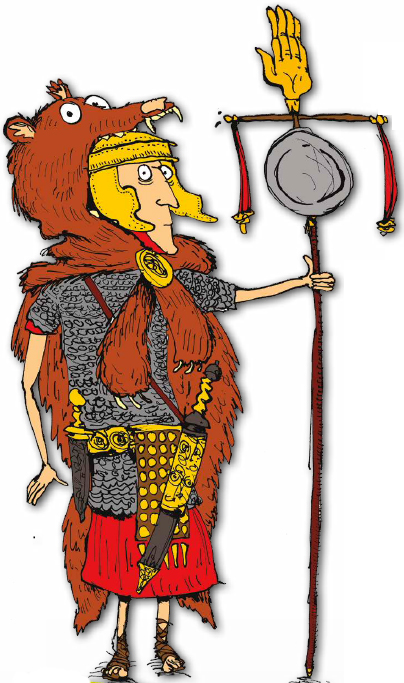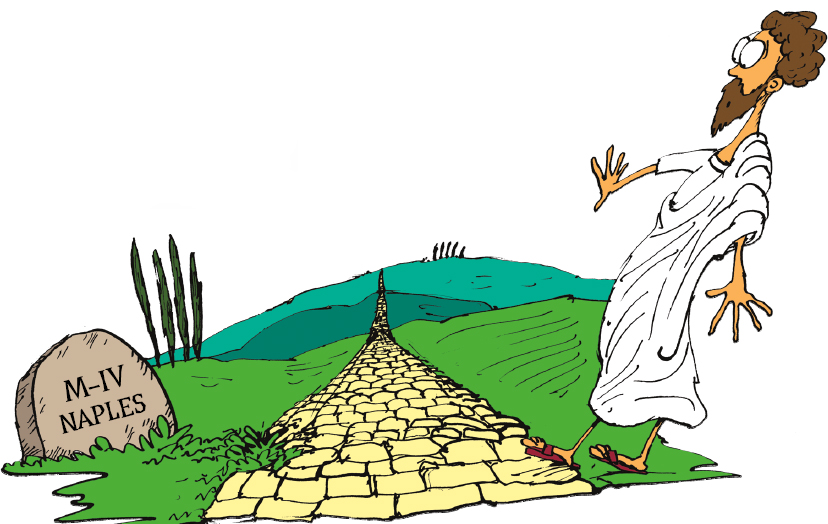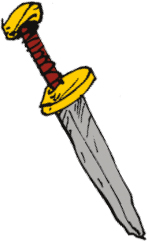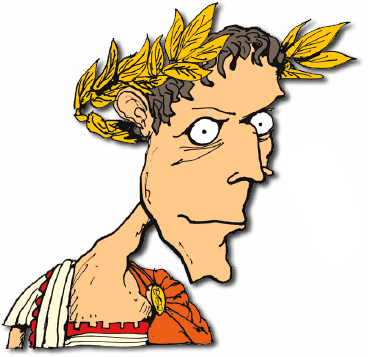
Please visit our website, www.garethstevens.com.
For a free color catalog of all our high-quality books, call toll-free 1-800-542-2595 or fax 1-877-542-2596.
Library of Congress Cataloging-in-Publication Data
Barnham, Kay.
Gory gladiators, savage centurions, and Caesars sticky end: a menacing history of the unruly Romans! /by Kay Barnham.
p. cm. (Awfully ancient)
Includes index.
ISBN 978-1-4824-3113-1 (pbk.)
ISBN 978-1-4824-3116-2 (6 pack)
ISBN 978-1-4824-3114-8 (library binding)
1. Rome Civilization Juvenile literature.
2. Rome History Juvenile literature.
I. Barnham, Kay. II. Title.
DG77.B37 2016
937d23
Published in 2016 by
Gareth Stevens Publishing
111 East 14th Street, Suite 349 New York, NY 10003
Copyright Wayland /Gareth Stevens 2016
Senior editor: Julia Adams
Illustrator: Tom Morgan-Jones
Designer: Rocket Design (East Anglia) Ltd.
All rights reserved. No part of this book may be reproduced in any form without permission from the publisher, except by reviewer.
Manufactured in the United States of America
CPSIA compliance information: Batch #CS15GS.
For further information contact Gareth Stevens, New York, New York at 1-800-542-2595.
This guy came to a sticky end. Find out more on .
Can you guess whats in this bag? Turn to for a full explanation.
Whats this famous American icon doing in a book about the Romans? Turn to to find out!
Contents
Welcome to Roman Times!
Introducing... Julius Caesar!
Extra-Evil Emperors
Inside the Roman Army
Dreadful Discipline
Law and Order
Slaving Away
Roman Gods and Goddesses
Peacock Brains and Flamingo Tongues
Flushed with Success!
Fashion NOT Allowed
Glorious and Gory Gladiators
The End of an Empire
Glossary
More Information
Index
WELCOME TO ROMAN TIMES!
What do gladiators, centurions and Julius Caesar have in common? Easy! They were ALL Romans. And they all had a pretty tough time of it too, with oodles of blood and gore and horribly nasty deaths.
Who were the Romans?
Rome is now the capital of Italy. But 2000 years ago, it was at the very heart of a huge and hugely powerful republic, which grew to become an even bigger and even more powerful empire. The Roman Empire surrounded the Mediterranean Sea. At its height, during the second century CE, it covered 4 million square miles (6.5 million sq. km.), which is about the same size as Russia today. All citizens and soldiers of the Roman Empire were known as Romans.
What did the Romans do?
The Romans didnt just conquer a huge empire. They built magnificent aqueducts, bridges, and roads. They improved public health by supplying fresh water and taking dirty water away again. They had central heating and toilets. The Roman army even used some of the earliest hospitals. But the Romans had a dark side, too. And as youll find out in the rest of this book, that was MUCH more bloodthirsty
A LOOK BACK IN TIME
The myth versus the truth
Rome the myth
The Romans believed that in 783 BCE, twin boys called Romulus and Remus were thrown into the River Tiber by their wicked uncle. BOO! But they were washed ashore on an island in the middle of the River Tiber. HURRAY! Then a passing wolf found the boys and took care of them until they were grown up. AWWW.
So what does this have to do with Rome?
Thirty years later, Mars the god of war told Romulus and Remus to build a city in the exact spot where the wolf had found them. But the twins couldnt agree where that was. They fought. Remus was killed. And the city was named Rome after Romulus, the winner.
Rome the truth
What actually happened was that Rome began as a small village on the banks of the River Tiber. Then the village grew larger. But that wasnt anywhere near as exciting as the story of Romulus and Remus, which is perhaps why the myth was made up in the first place.
Which version do YOU prefer?
Fascinating fact
Rome has only been the capital of Italy since 1871.
The Romans built some awesome (but boring) roads.
Introducing...
Julius Caesar!
Caeser was a great leader, but he got a bit too big for his own boots!
Julius Caesar was perhaps the most famous Roman ever. Born in 100 BCE
into one of Romes most important families, he quickly worked his way up the political ladder of the Roman Republic. But how far could he go?
The great governor
Roman Gaul was an area of Europe that included what are now France and Luxembourg as well as parts of Switzerland and Germany. But Roman Gaul wasnt a very stable place. Some tribes were threatening to fight back against Roman rule. So when Caesar was made governor of Roman Gaul in 60 BCE, he attacked! And he won. By the time Caesar had been governor for eight years, all of modern France and Belgium were part of the Roman Republic. Plus, now that the Romans had conquered northern France, they would be able to reach Britain more easily. And thats exactly where Caesar went. Twice. He didnt conquer Britain, but he did find out a lot of information that came in useful when the Romans went to finish off the job in 43 CE.
The daring and dastardly dictator
After his success in Roman Gaul, Caesar was ordered back to Rome. He obeyed, but he took his army with him and attacked the Roman leader, Pompey. Caesar won, which meant that he was now the leader of the Roman Republic. But he went further and made himself a dictator, too. No one else could rule Rome until he died.
The sticky end
Caesar passed a number of laws and reforms, including inventing his own calendar. He even had a month named after him July. But hed upset a lot of people in his quest for power, and a group of them got together and hatched a deadly plan.
Next page
